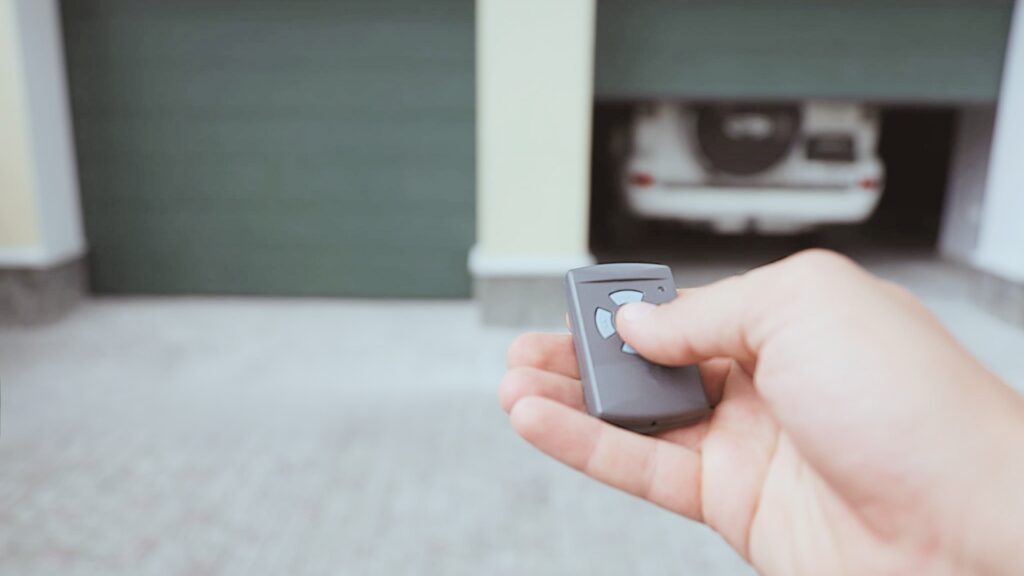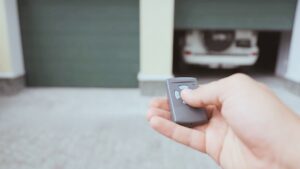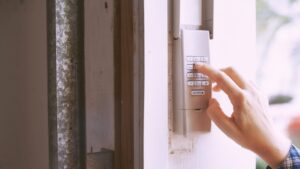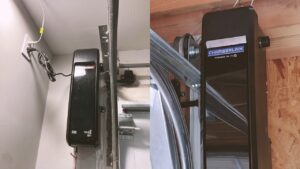Connect With A Garage Expert
Connect with local experts, Compare quotes, Get the best price.
Having trouble with your garage door remotes can be annoying, especially when you’re in a hurry. Dead batteries, signal issues, or sensors out of alignment are common reasons why your remote isn’t working.
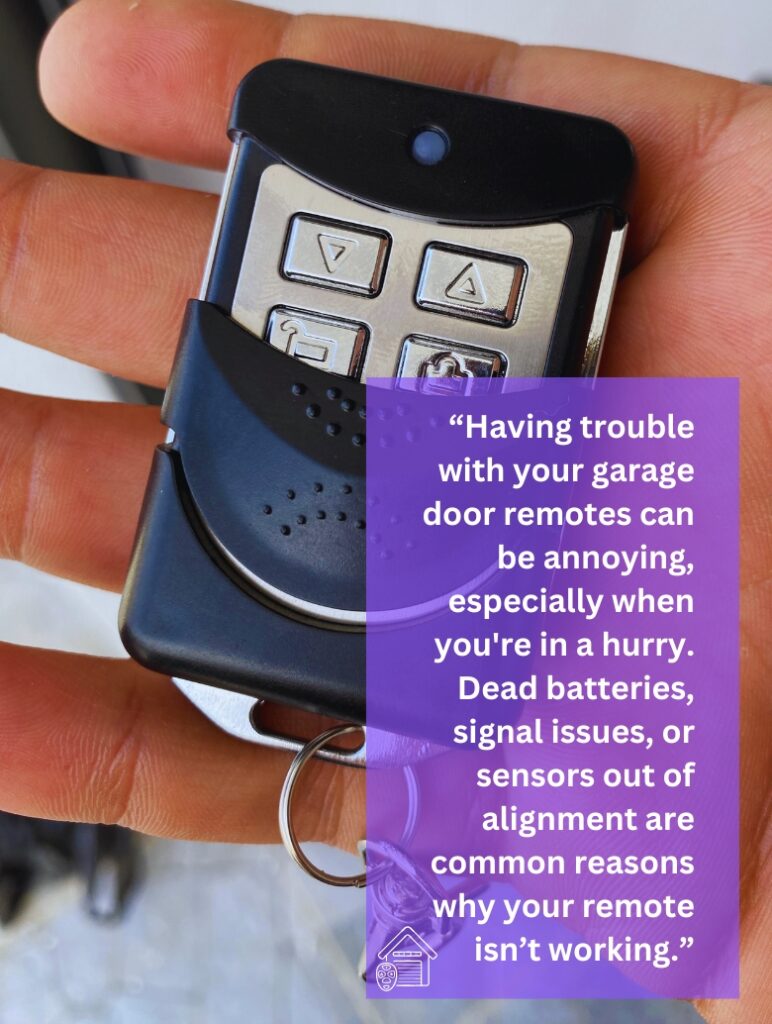
In this article, we will explore why your garage remotes not working and provide easy solutions. You’ll learn to troubleshoot minor issues and know when to seek professional help.
What Should I Do if My Garage Remotes Not Working?
When your garage door remote fails to work, it can be due to issues with the remote itself or a misalignment between the remote and the opener’s frequency.
Addressing these problems involves a few simple troubleshooting steps.
1. Assessing Your Remote
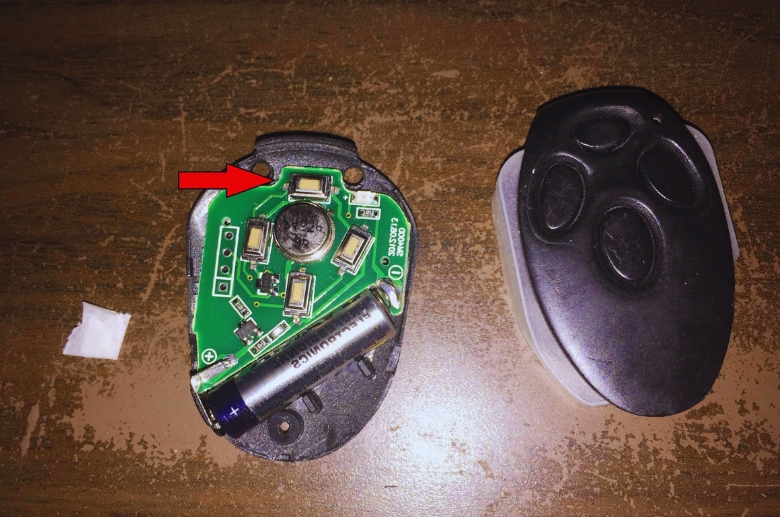
Here’s a quick guide to fixing your remote. When troubleshooting issues with your garage door remote, start by checking for common problems.
First, replace the battery and ensure it’s correctly installed. Next, follow the manufacturer’s instructions to reset the remote.
Additionally, clean the transmitter with Q-tips to remove any dirt or debris and check for obstacles blocking the signal path.
Efficiently diagnose your remote by first checking for any visible damage to the lock button or circuitry. Use a multimeter to test the circuit continuity, ensuring everything is functioning.
2. Synchronizing Your Remote and Opener
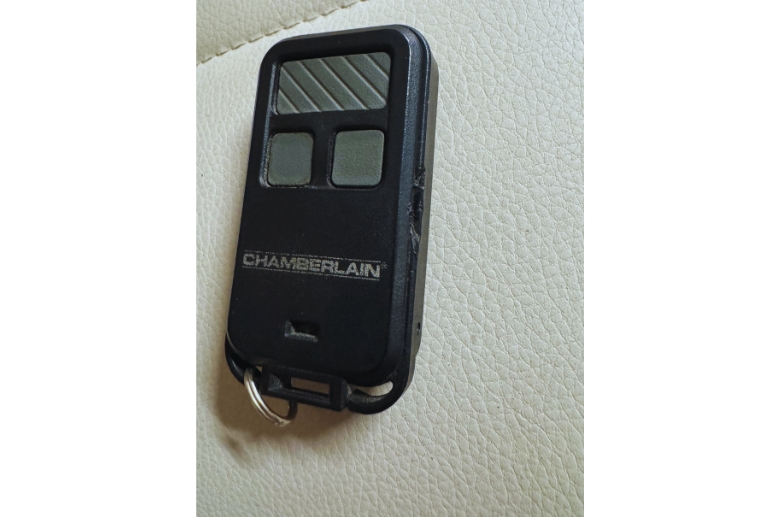
We’ll walk you through the steps to assess issues with your remote, ensuring it works smoothly.
Antenna Connection Issues
If your garage remote is malfunctioning due to antenna-related problems like signal interference, it requires troubleshooting, such as adjusting the antenna position, removing nearby sources of interference, or using signal boosters.
Lost Connection
If your garage remote has lost synchronization with the opener, it will need reconnection. Follow these steps to reconnect:
- Find the LEARN button on your garage door opener.
- Press and quickly release the LEARN button. You’ll notice the LEARN LED will light up steadily.
- Within 30 seconds, press the button on the remote control that you want to use to operate the garage door.
- The garage door opener lights will flash, or you’ll hear two clicks, indicating that the remote control has been successfully programmed.
Reprogramming Remote Instructions
Reprogramming your remote might be necessary. Here are some detailed instructions for common brands.
LiftMaster MAX Remote Control
Step 1. Locate the “Program” button on your garage door opener or keypad.
- On the 890MAX and 895MAX remotes, find the “Program” button. Press it using a safety pin or paper clip until the LED on the front of the remote control turns on.
- On the 893MAX remote, locate the “Program” button on the back of the device under the visor clip. Press the button to activate it.
- On the 877MAX keyless entry keypad, simultaneously press the * and # buttons until the lighted keys stop flashing and stay steadily lit.
Step 2. Press and release the button on the remote that you wish to program.
Step 3. Wait for the remote control LED to stop blinking, then slowly press and release the button again. Repeat until the light blinks.
Avoid pressing the button after the light blinks. If you do, you will need to go through the steps again.
Step 4. Once the light blinks, press any other button on the remote control.
Following these steps will assist you in successfully programming your garage door remote.
Always refer to the remote’s manual for brand-specific instructions, and remember that RF interference from other devices could be a common issue during reprogramming.
3. Resolving Interference and Signal Issues
Interference and signal issues can disrupt your garage door opener’s operation. Here’s a concise guide to diagnosing and fixing these efficiently.
Radio Frequency Interference
Wireless routers, cordless phones, and nearby electronics operating on the same frequency as your garage door opener remote, usually between 300 and 390 MHz, are common devices that may cause interference.
To minimize this, consider relocating these devices from your garage or adjusting their settings to operate on different frequencies.
Pro Tip: If your remote isn’t working because of interference, getting help from a garage door service company can quickly fix the problem.
Additionally, installing frequency filters, such as bandpass filters or notch filters, can help reduce unwanted radio signals by blocking out frequencies that are causing interference with your garage door opener.
Keep in mind that bandpass filters allow only a specific range of frequencies to pass through, which can isolate the desired signal from interfering frequencies. Notch filters, on the other hand, are designed to attenuate or reject a narrow range of frequencies, effectively suppressing interference at those frequencies while allowing others to pass.
Signal Range Issues
If your garage door remote isn’t working after battery replacement, it might be due to signal disruption. Pressing the remote too far away can also hinder the signal from reaching the opener effectively.
- Make sure you are within 20 feet of the door.
- Assess if any obstructions might be blocking the signal.
To extend the range of your garage door opener signal, consider using signal boosters. These boosters can amplify the signal’s strength and improve its reach.
Interference from LED Light Bulbs
LED lights can interfere with garage door openers because they contain drivers inside the bulbs that produce electromagnetic fields.
These fields can disrupt the radio waves used by the garage door opener to function, preventing the door from receiving the signal to open or close properly.
The interference can be resolved by using shielding wires or adding a ferrite bead, a passive component that filters high-frequency noise across a broad range of frequencies.
Alternatively, you can use LED bulbs specifically designed for garage door openers or switch back to traditional incandescent bulbs, which typically do not emit electromagnetic interference.
4. Checking Remote and Opener Compatibility
Ensure your garage door remote works seamlessly with your opener. Here’s how to resolve compatibility issues.
- Understand the compatibility range of universal remotes.
- Check if the universal remote supports your opener’s model and brand.
- Verify the compatibility of your garage door opener before purchasing a universal remote.
- Check the packaging or product specifications of the universal remote you intend to use.
Suppose your garage door opener is not listed in the compatibility list of the universal remote you are using. In that case, it is recommended that you consult the manufacturer or seek professional assistance.
Older Opener Models
If you’re facing compatibility problems with universal remotes due to an older garage door opener, there are steps you can take to address them.
First, identify any issues with older models and look into adapters or conversion kits.
Another option is to upgrade the opener for compatibility with modern remotes. If your opener needs to be updated for a cost-effective upgrade, replacing it might be the best option.
Alternative Ways to Operate a Garage Door Without a Remote
Here are some alternative methods you can try if your garage door remote isn’t working.
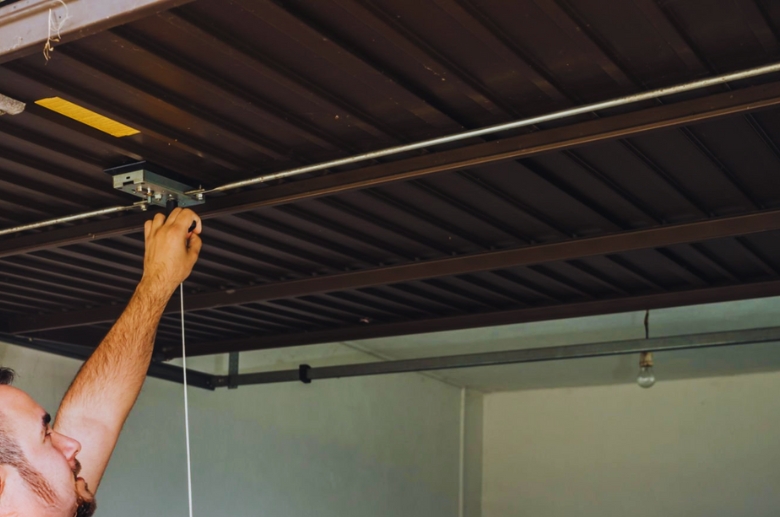
- Manual Operation – Every garage door system is equipped with a manual release mechanism. Pulling the red handle attached to a rope hanging down from the garage door track will disengage the garage door from the opener, enabling you to lift the door open or close it by hand.
- Wall-Mounted Keypad – Many garage door openers feature an external keypad that mounts near the garage door. To operate the door without needing the handheld remote, find the keypad outside your garage, enter the programmed code, and press the “Enter” button or a specific key to open or close the door.
- Smartphone App – Check if your garage door opener has smart capabilities, download the respective app from your app store, follow the setup instructions to connect your garage door to the app, and use your smartphone as a new remote to control the door.
If you’re considering getting a new remote, ensure it’s compatible with your garage door opener model.
Connect With A Garage Expert
Connect with local experts, Compare quotes, Get the best price.
When Should I Consider Replacing My Garage Remote?
To ascertain whether it’s necessary to replace your garage remote, consider the following points.
- Past Performance: Has the remote previously worked with this door?
- Proximity Effectiveness: Does the remote function when you are directly under the opener?
- Battery Condition: Is the remote’s battery functioning well?
- Physical State of Remote: Are there any physical issues like cracked, loose, or stuck buttons on the remote?
- Light Signal: Does the light on the remote activate when a button is pressed?
- Opener’s Response: Does the garage door opener’s diagnostic LED flash when it receives a signal from the remote?
If the remote still fails to operate after these tests, it may indicate the need for a replacement.
Conclusion
Troubleshooting garage door remote issues can involve various factors, from dead batteries to signal disruption. Expert guidance is crucial to resolving these issues efficiently.
If simple troubleshooting steps like resetting the remote do not solve the problem, seek professional help from a reliable garage door service.

